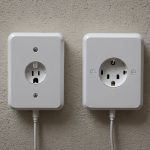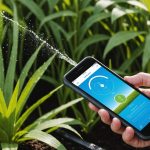Understanding Smart Home Water Leak Detection Systems
Water leaks can lead to significant damage if undetected, making smart home water leak detection systems crucial. These systems use leak detection technology to identify moisture levels and send alerts before major damage ensues. An essential feature of many systems is smartphone integration, enabling users to receive real-time alerts and manage the system conveniently via a mobile app.
Several types of water leak detectors are available, from simple moisture sensors to advanced systems with multiple sensors and connectivity options. Basic models might only detect water presence, while more sophisticated ones offer detailed tracking, alerting users to unusual patterns. Smartphone integration enhances the user experience by allowing seamless monitoring and control.
Also read : Easy Smartphone Integration: A Step-by-Step DIY Guide to Set Up Your Smart Plug!
Understanding the variety of water leak detectors and how leak detection technology works is vital. Some models are integrated into wider smart home systems, whereas others operate independently. As technology evolves, newer models focus on smartphone integration for enhanced accessibility and real-time management, ensuring homeowners are promptly notified of potential issues, whether they are home or away.
Preparing for Installation
Before embarking on the installation preparation process of your smart water leak detection system, it’s crucial to gather all necessary tools and materials. This typically includes screwdrivers, mounting brackets, and potentially a drill, depending on the system’s requirements. Careful installation preparation ensures a smoother setup process and prevents future issues.
Topic to read : Unleash the Full Potential of Your Smartphone for Epic Augmented Reality Gaming: Essential Tips for Optimal Performance
To ensure a seamless integration, verify the compatible devices with your existing home systems and smartphones. This step is vital to avoid issues post-installation. Check for compatibility with Wi-Fi networks and smartphones, as these components are often crucial for system requirements.
Another essential step is thoroughly reading the user manual of the leak detection system. It contains critical information about system requirements and specific instructions relating to your compatible devices. Following these guidelines helps in avoiding common pitfalls and ensures optimal function.
Finally, take note of placement recommendations for the devices, which the manufacturer typically provides. Proper placement can significantly influence the system’s performance, especially concerning accurate leak detection and alert efficiency. Following the recommended steps will lead to a successful installation, setting the foundation for a well-maintained and reliable water leak detection system.
Step-by-Step Installation Process
To successfully set up smart leak sensors, follow these detailed installation steps for a cohesive system experience.
Setting up the Base Station
Select a central location for the base station to ensure optimal communication with all sensors. Connect the station to a reliable power source and stable internet. The initial configuration process typically includes syncing the station with your network and devices, serving as the heartbeat of your smart water leak detection system.
Installing Water Leak Sensors
Begin by identifying areas prone to leaks, like near appliances and plumbing. Proper sensor placement is crucial for effective leak detection. Securely install each sensor to prevent movement, and ensure they stay in their intended locations. Once in place, link these sensors to the base station, completing the physical setup.
Integrating with Smartphone Applications
Download and install the designated app onto your smartphone. This device setup step enhances real-time management. Pair each sensor with your phone, enabling seamless control. Configure the app for alert notifications, crucial for swift responses to water leaks. This integration ensures you’re always aware of any threats, safeguarding your home from potential water damage.
Troubleshooting Common Issues
Smart home water leak detection systems offer convenience, but sometimes installation issues arise. Troubleshooting these problems is crucial. A common challenge is sensors not communicating with the base station. Ensure that sensors are within recommended range and free from physical obstructions. If distance remains an issue, consider using signal extenders.
Connection issues with the smartphone integration can also occur. Confirm that your network settings are correctly configured and that your smartphone app is up-to-date. Reinstalling might resolve persistent problems. Be sure to check for compatibility with your device model and operating system during setup. If alerts are inconsistent, review notification settings on your device and app.
When dealing with installation issues, verify all system requirements and follow the user guide closely. Detailed instructions can assist in identifying overlooked steps. Regular maintenance checks can prevent functionality loss, ensuring efficient leak detection. Battery levels should be monitored to maintain sensor performance—consider setting reminders for regular checks. Emphasising these common problems and solutions helps maintain a reliable water leak detection system.
Safety Considerations and Maintenance
Prioritising safety tips during the installation of your smart water leak detection system is essential. Always turn off the main water supply before beginning to avoid accidents. Follow electrical safety guidelines by ensuring your hands are dry and avoiding wet areas while handling electronic components.
Regular system maintenance is crucial for optimal performance. Periodically inspect sensors to make sure they are properly secured and free of obstructions that might impact their function. Dust and debris can interfere with sensor accuracy, so clean around the device occasionally.
To prolong device longevity, routinely check battery levels. Low batteries can hinder alert notifications, undermining the system’s effectiveness. Set reminders for battery checks or consider systems that offer battery-level notifications.
Stay updated with the latest software updates for both the detection system and the smartphone app. Updates often include improved data security and performance enhancements, ensuring your system operates efficiently. Enabling automatic updates can help maintain a seamless and secure connection.
These practices not only enhance the safety tips during installation but also ensure the long-term effectiveness and reliability of your smart home water leak detection system.
Additional Resources and FAQs
For homeowners navigating smart home water leak detection systems, having access to a wealth of additional resources can be invaluable. Accompanying these systems are troubleshooting guides that address routine hurdles and common queries frequently raised through FAQs. Here’s what you need to know:
Frequently Asked Questions (FAQs)
- What should I do if my system isn’t sending alerts?
- Ensure the smartphone integration is properly configured and check your network settings. Re-sync the devices if necessary to restore functionality.
- **How do I know if my *leak detection technology* is functioning correctly?**
- Conduct periodic tests by simulating a benign leak scenario. This helps in verifying sensor alert responsiveness and recalibrating as needed.
- What types of detectors are most suitable for my home?
- Evaluate your home’s specific needs and opt for detectors that offer smartphone integration for leak detection technology efficiently tailored for your environment.
Refer to troubleshooting guides for more in-depth solutions and explore user forums for real-life solutions shared by other users. These resources not only empower you with practical knowledge but also aid in maximising the efficiency and longevity of your water leak detection system.











